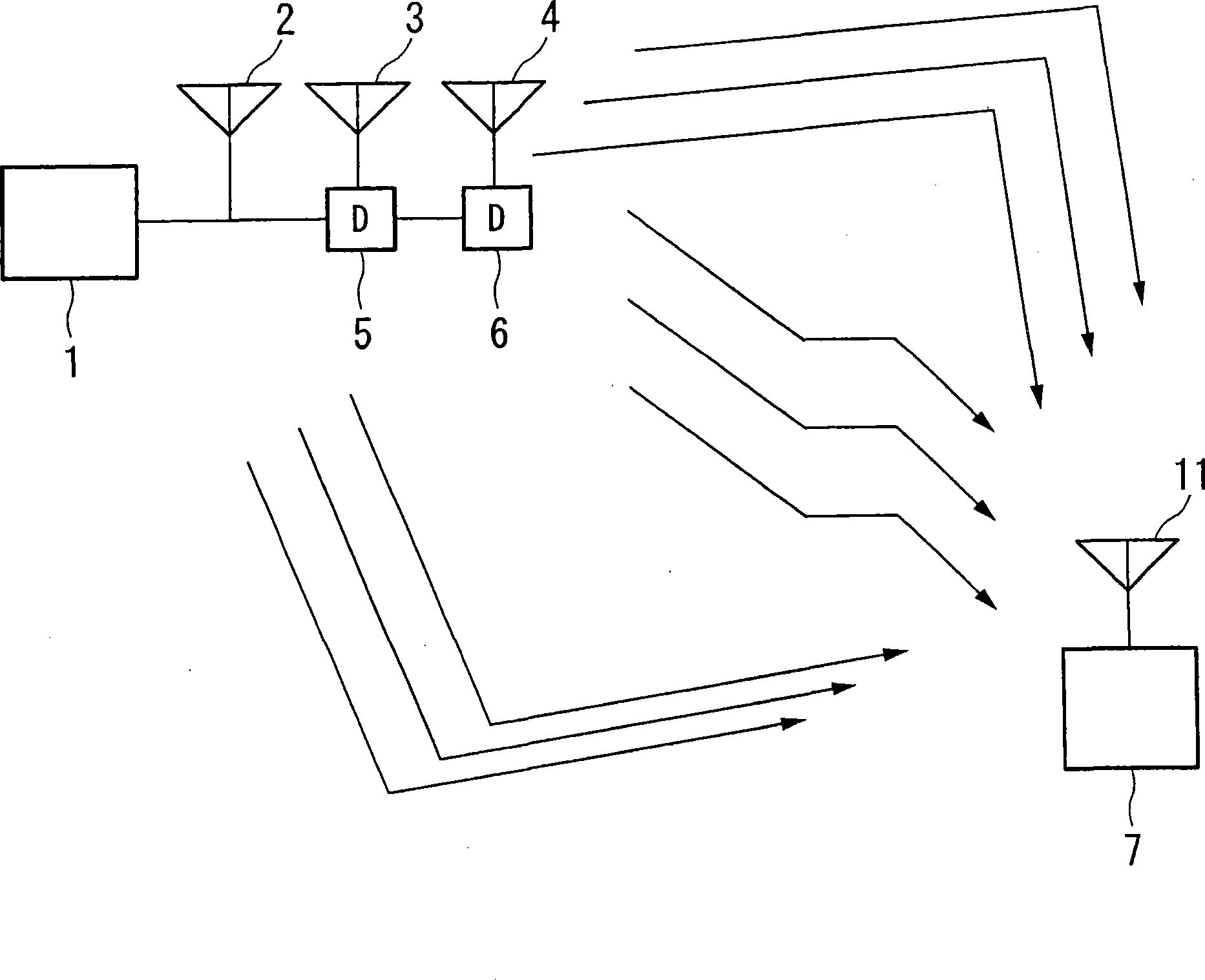Terminal apparatus, base station apparatus and communication system
A technology of wireless transmission and transmission antenna, which is applied in the directions of wireless communication, radio transmission system, space transmit diversity, etc., can solve the problem that the multi-user diversity effect cannot be fully obtained, and achieve the effect of good multi-user diversity effect.
- Summary
- Abstract
- Description
- Claims
- Application Information
AI Technical Summary
Problems solved by technology
Method used
Image
Examples
Embodiment approach 1
[0070] Next, a first embodiment of the present invention will be described with reference to the drawings. figure 1 It is a block diagram showing the configuration of the communication system in this embodiment. figure 1 A situation is shown in which a signal transmitted by the wireless transmitter 1 reaches the wireless receiver 7 via a plurality of propagation paths. The wireless transmitter 1 has a plurality of transmitting antennas 2 to 4, and gives different delay times 0, T, and 2T to each transmitting antenna, and transmits from each transmitting antenna 2 to 4. The wireless receiver 7 receives the signal transmitted from the wireless transmitter 1 . It should be pointed out that in figure 1 A case where the wireless transmitter 1 includes three transmitting antennas 2 to 4 is described as an example. It should be pointed out that the multiple transmitting antennas described here are used as an example, and the antennas mounted in the base station equipment such a...
no. 2 Embodiment approach
[0123] In this embodiment, a system will be described in which a terminal measures the amount of phase rotation for each antenna and notifies it to the base station. Figure 23 and Figure 10 roughly the same, but with Figure 10 The difference lies in the amount of phase rotation required to make the phase coincide with H1, that is, for the signal H2e from the antenna number 2 (transmitting antenna 3) jθ Additional phase rotation amount θ2 for signal H3e from antenna number 3 (transmitting antenna 4) j2θ By adding the phase rotation amount θ3, the reception signals from the three transmission antennas can be received in a state of in-phase addition in the terminal.
[0124] Figure 24 indicates the situation. That is, the transfer function after adding the delay of each antenna is H1, H2e jθ 、H3e j2θ . become these synthesized transfer functions namely H1+H2e jθ +H3e j2θ , but in the base station, the phase rotation of θ2 is added to the antenna of antenna number 2 (...
PUM
 Login to View More
Login to View More Abstract
Description
Claims
Application Information
 Login to View More
Login to View More - R&D
- Intellectual Property
- Life Sciences
- Materials
- Tech Scout
- Unparalleled Data Quality
- Higher Quality Content
- 60% Fewer Hallucinations
Browse by: Latest US Patents, China's latest patents, Technical Efficacy Thesaurus, Application Domain, Technology Topic, Popular Technical Reports.
© 2025 PatSnap. All rights reserved.Legal|Privacy policy|Modern Slavery Act Transparency Statement|Sitemap|About US| Contact US: help@patsnap.com



